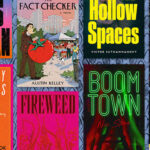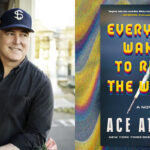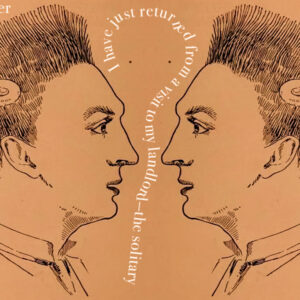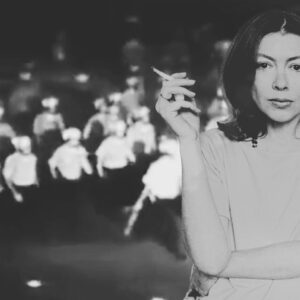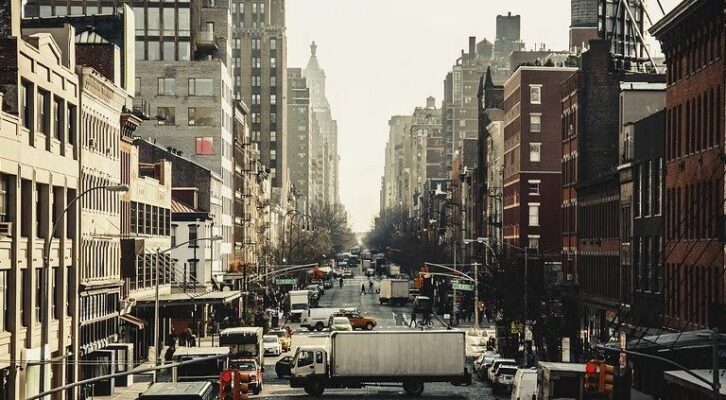
How the 9/11 Attacks Sparked a Never-Ending Wave of Gentrification
Jesse Rifkin on the Lost World of New York City Nightlife
You don’t need me to tell you what happened in New York City on September 11, 2001. If you were alive and conscious at the time, the moment you found out about it is probably seared into your brain forever.
9/11’s impact on the city is a book unto itself, and much of it is beyond the scope of this one. But there were a few key aspects of the fallout that had both immediate and long-term impacts on the city’s music scenes.
Most significantly, the city—especially Downtown—took a massive financial hit: a Chamber of Commerce report from November 2001 estimated an $83 billion gross loss for the city as a direct result of the attacks, especially in the fields of tourism and retail. Polling showed that “some potential visitors feel the need for permission to enjoy themselves again in a place where tragedy has occurred…[so the city’s] marketing campaigns should take advantage of the fact that New York City continues to be perceived as an exciting and vibrant place, rather than appeal to the sympathy of potential visitors.” According to Lower Manhattan Development Corporation co-founder Matt Higgins, “It was important to send out a global call to come to New York as a patriotic act.”
Much of rural and suburban America had viewed the city skeptically for decades (as Woody Allen famously declared in 1977’s Annie Hall, “The country looks upon New York like we’re left-wing, communist, Jewish, homosexual pornographers”), but suddenly Americans of all stripes adored the city, and they all had brand-new “I <3 NY” shirts to prove it. People from around the country did begin to see New York tourism as a patriotic act—as the writer and performer Reverend Jen summed it up in her 2003 book Reverend Jen’s Really Cool Neighborhood, “Suddenly, the tank top–sporting, macho metropolis was a pity fuck for fat Oregonians.”
People from around the country did begin to see New York tourism as a patriotic act.
This isn’t to say that, prior to this, New York was somehow 100% free of tourist traps—we’re talking about a city that, in the late ’90s, had a Planet Hollywood, a Hard Rock Cafe, a Motown Cafe and a Harley-Davidson Cafe, all within a three-block radius. But after 9/11, it felt like the spots that catered to tourists were no longer cordoned off in Midtown. They were spreading into the part of New York where people actually lived—even those with edgier lifestyles.
Emily Armstrong: Around our block [on Orchard Street], we have four or five 20-story hotels, and they all got their approvals right after 9/11. They gave out a gazillion liquor licenses, all in an effort to save Lower Manhattan. And now we’re living with the vestiges of what happened.
After a decade of widespread disinterest in the city’s rock scenes, the period after 9/11 saw a renewed passion for New York rock ’n’ roll—or at least, a nostalgic, heavily sanitized version of it. The Strokes, a buzzy new band of Upper East Side rich kids, had been building a local reputation since their formation in 1998, with many of their early gigs taking place at clubs like Arlene’s Grocery and Mercury Lounge. Their self-consciously retro “punk” look and Velvet Underground–meets-Television sound scanned as “Classic NYC” to European music journalists. Having already released their 2001 debut album Is This It abroad, the band were set to release the domestic vinyl edition on 9/11, with CDs soon to follow.
Is This It featured an ostensibly anti-cop song called “New York City Cops.” The lyrics have very little to do with cops, instead mostly recounting a debauched night out in the city (as many of the songs on Is This It did). But when the subject of the NYPD does arise, singer Julian Casablancas laments, “They ain’t too smart.” After 9/11, that sensibility was no longer in vogue—the NYPD, who’d been insufferable under Giuliani (if not long before), were now (rightfully, in that moment!) being hailed as heroes for their response to the attacks.
Domestic copies of Is This It were recalled, “New York City Cops” was cut from the track list, and another song, “When It Started,” was rushed out to replace it on the CD. Still, the resultant press about the song’s removal helped vault the band to national stardom. Here was another “New York” thing that outsiders could understand, and therefore, at long last, the Lower East Side indie scene had produced some genuine, honest-to-god rock stars.
Mike
9/11 occurred in the waning days of Giuliani’s final term as mayor. Prior to the event, polls had indicated a leftward shift in the city’s political future, a natural pendulum swing away from two terms under a Republican in a Democratic city. But the panic and xenophobia that swept the country after 9/11 changed that course: Michael Bloomberg, a billionaire CEO and lifelong Democrat who ran as a Republican with Giuliani’s endorsement, was elected mayor.
Crackdowns on nightlife, already flourishing under Giuliani, went into overdrive as Bloomberg strove to rebuild the city in an image that would appeal to tourists, especially wealthy ones.
Much like his predecessor Giuliani, Bloomberg’s tactics overwhelmingly targeted lower-income Black and Latinx communities. As he said in 2015, defending his “stop and frisk” policy,
“We put all the cops in minority neighborhoods. Yes, that’s true. Why do we do it? Because that’s where all the crime is. And the way you get guns out of the kids’ hands is to throw them up against the wall and frisk them.”
On March 9, 2003, the Bloomberg administration launched the 311 hotline. Ostensibly a number you could call for information about or access to nonemergency city services, it’s just a way to call the cops on people and businesses that bothered you even though they haven’t committed any crime—a nonemergency spinoff of 911.
And a lot of people—especially the new, moneyed residents Bloomberg was wooing—don’t like loud bars. James Marshall, who owned the Alphabet City bar Lakeside Lounge (162 Avenue B), recalled the absurd lengths the authorities would go to when responding to 311 noise complaints.
Marshall: The quality of life patrol would just come in to the bar and write tickets for every fucking thing possible. When they would show up for the noise complaints, they would stand outside with the decimal reader and wait for the bus to show up, and then when the bus showed up, they would turn the meter on. It was guaranteed to go over 60 decibels, because the bus itself is like 85 decibels when it revs up. You can’t fight a noise ticket, you’re automatically guilty. I remember the first noise ticket we got was $2,500, and the next one was going to be $5,000, and the next one after that is $10,000—each time it doubles.
Less than a month after 311 debuted, the Bloomberg administration banned smoking in the city’s bars, restaurants, childcare/youth centers, schools, hospitals/healthcare facilities, commercial establishments, places of employment, indoor arenas, bingo facilities, and zoos. But of course, there’s only one place on that list where patrons regularly expected to puff away in comfort.
I doubt anybody’s waxing nostalgic about the halcyon days of New York’s dark, seedy, smoke-filled zoos.
I hate it when people smoke indoors. It makes my eyes water and my clothes smell. But as promoter Todd Patrick pointed out, “The smoking ban did a lot more than ban smoking.” Random targeted enforcement meant that bar owners had to constantly be on watch: staying open after-hours, welcoming underage patrons, and hosting music without a cabaret license were all greater risks, now that the NYPD was going around looking for smoky bars to slap with a $400 fine.
Of course, if smokers can’t smoke indoors, that means they have to smoke outdoors. Which means that they’re going to be having (probably inebriated) conversations outside of the bars, where anyone and everyone can hear them. Which means more 311 noise complaints.
Tonic’s End
The success of bands like the Strokes, Yeah Yeah Yeahs, and Interpol (all veterans of Mercury Lounge and Luna Lounge) created international interest in the Lower East Side as a chic, gritty party destination. Tourists flocked to the neighborhood for a taste of authentic “hipster” nightlife. Older, artsier businesses were pushed out and replaced with bars that sold $6 Budweisers to people in American Apparel hoodies. In 2003, a cupcake bakery opened on Rivington Street (they’re really good cupcakes, but still). By 2006, Lindsay Lohan and Kate Moss were writing scandalous graffiti in the bathroom of Darkroom (165 Ludlow Street), an infamous Lower East Side bar/coke den.
At first, none of this seemed a threat to Tonic. Even after the introduction of 311, they weren’t getting noise complaints, as the former Kedem winery was only a single floor and basement, meaning there were no upstairs neighbors, and the building was flanked with empty lots on either side. And location-wise, they seemed far enough off from the mania of Ludlow Street for any developer to want to grab the space and flip it into another cupcake joint.
That finally changed in 2006 when developers broke ground in the neighboring lot at 105 Norfolk Street. Over the course of a year, they constructed a sixteen-story condo building covered in reflective, blue-tinted glass, imaginatively dubbed the Blue Condominium.
The Blue Condominium opened for business in 2007, with one-bedroom apartments going for $850,000. It was a perfect visual manifestation of the gentrification under Bloomberg. But according to Licht, “Because that [Blue Condominium] building went up, the common perception is that it was gentrification that squeezed out Tonic. But that’s not really totally accurate.
Bloomberg strove to rebuild the city in an image that would appeal to tourists, especially wealthy ones.
“Tonic was like a nonprofit music venue that was functioning as a for-profit music venue, and that’s just not sustainable in the long term,” Licht explained. “Technically the reason Tonic closed was that they were way behind on their rent.” Though Tonic had long been renting the building from the owner of the winery, that landlord eventually sold the building to a larger real estate company, who raised the rent as soon as they were able to do so. Necessary renovations due to fire safety concerns also expanded the club’s maximum capacity, which wasn’t as positive as it sounds.
Licht: The capacity went from 180 to 220, which is not that big of an increase. But if you can pack a show of 220 people, you’re talking about an act that has a booking agent, and if they’re selling out Tonic for 220 people, the next time around, he’s going to be calling Mercury Lounge where the capacity is 290,148 or the Knitting Factory which is 300. They’re not going to be coming back to Tonic over and over again.
With the enlarged space, some of the more leftfield artists who had helped give Tonic its initial reputation felt that they were once more demoted, as they had been at the Knitting Factory after its move to Leonard Street. “There was more stuff that was designed to fill the space than it was [about] a certain aesthetic,” said Elliott Sharp. “Those of us who kind of made the place happen for the first few years were then relegated to less important nights of the week.”
On top of it all, structural issues rendered Tonic’s plumbing temporarily inoperable. As Caruso-Scott put it, “We were in deep water (literally too).” Dana Wachs recalled the installation of a porta-potty in the club’s lobby as an especially low point.
The club came very close to shutting in 2005, but benefit concerts by the likes of Devendra Banhart, Yoko Ono, Yo La Tengo, Medeski Martin & Wood, and John Zorn kept it afloat for another two years. Still, as they approached the end of their second five-year lease in 2007, Tonic’s finances were simply stretched too thin to survive, and the club’s $10,000-a-month rent went unpaid for months. In Licht’s memory, Tonic’s owners were also burned-out. “Marc Ribot sat down with John, Melissa and I, and laid out how Tonic could keep going as a nonprofit, but John and Melissa were just not interested.”
Tonic’s final night was April 13, 2007. Zorn, who had first put Tonic on the map, led two sets of improvised music, while the Bunker staged its final dance party in SubTonic. The following day, Ribot and musician Rebecca Moore led a protest in which musicians improvised inside the club from 11:00 a.m. until 5:00 p.m. as workers cleared the space out. When the club was finally emptied, police officers arrived and informed the musicians that they were trespassing and would be arrested if they didn’t vacate the premises. Ribot and Moore both refused and were led out of the club in handcuffs as supporters cheered them on from across the street.
With Tonic gone, the avant-garde scene has continued to survive, largely inhabiting nonprofit and privately funded venues like the Stone in Manhattan, or Issue Project Room and Roulette Intermedium, both located in Downtown Brooklyn. Arts for Art continues to present the Vision Festival annually, as well as periodic programming throughout the year. From a certain angle, these venues are preferable: there are no rowdy bars to distract the artists or fans, and because of their operating models they don’t need to be as concerned about turnout.
But on the other hand, few if any of those venues are ever going to book the contemporary equivalents of what Cat Power or Animal Collective were early in their careers. Granted, those kinds of indie rock artists aren’t at a loss for places to play. But without the regular cross-pollination of disparate scenes in a comfortable, informal setting where artists regularly hang out, something is lost. Scenes become more insular, more stratified, and less adventurous. Everybody just ends up hanging out around other people who like all the same stuff they do. Where’s the fun in that?
__________________________________
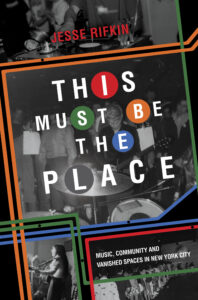
Excerpted from This Must Be the Place: Music, Community and Vanished Spaces in New York City by Jesse Rifkin. Copyright © 2023 by Jesse Rifkin. Used with permission from Hanover Square Press, an imprint of HarperCollins Publishers.
Jesse Rifkin
Jesse Rifkin is the owner and operator of Walk on the Wild Side Tours NYC, a music history walking tour company in New York City, and consults as a pop music historian for the Association for Cultural Equity. His work has been featured in the New York Times, Conde Nast Traveller, Vice and Fodor's Travel. Prior to his work as a historian, he spent twelve years touring the country as a working musician, playing at CBGB, Lincoln Center, and venues of every size and shape in between.











